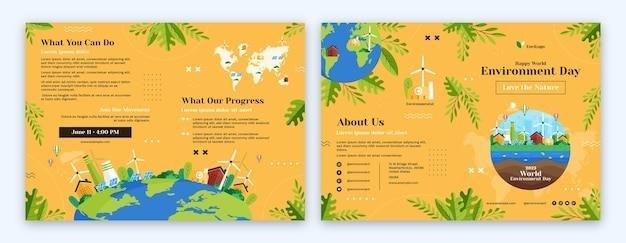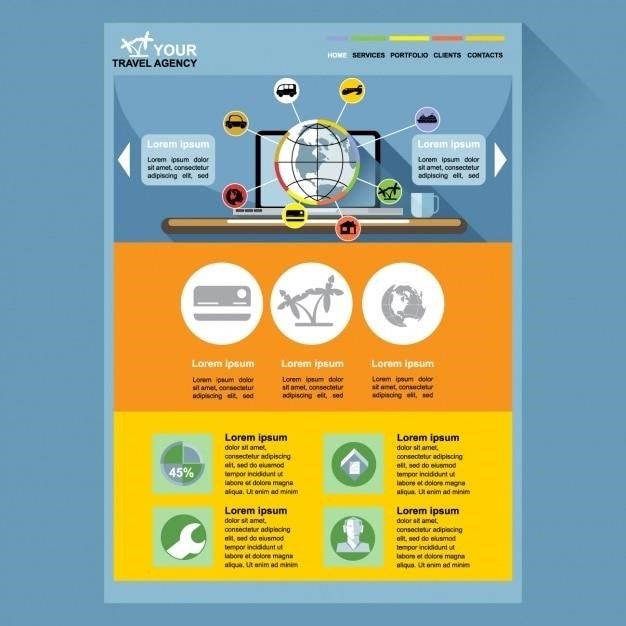Finding Free Geography Textbook PDFs
Numerous online platforms offer free geography textbook PDFs. These resources provide access to comprehensive learning materials, often including supplementary activity manuals. Websites and educational publishers frequently host downloadable PDFs, enabling convenient access to educational content.
Online Resources for Downloadable Textbooks
The digital age has revolutionized access to educational resources, making numerous geography textbooks available as free downloadable PDFs. Websites dedicated to open educational resources (OER) often host a vast collection of textbooks covering various geographical topics, from physical geography to human geography and regional studies. These platforms provide a valuable resource for students, educators, and anyone interested in expanding their geographical knowledge. Many of these online repositories are curated to ensure quality and relevance, offering a reliable alternative to purchasing expensive textbooks. Some sites may also provide supplementary materials, including activity manuals in PDF format, to enhance the learning experience. Utilizing these online resources can significantly reduce costs associated with education while providing access to high-quality learning materials. Remember to always verify the credibility of the source before utilizing any downloaded PDF.
Accessing PDFs from Educational Publishers
While many educational publishers primarily offer their textbooks in print format, a growing number are making digital versions available, sometimes as free downloads or through subscription services. Checking the websites of major publishers specializing in geography textbooks is a good starting point. Some publishers might offer sample chapters or excerpts as PDFs, providing a preview of the content. Others may offer complete textbooks in PDF format for purchase or as part of a bundled package with other learning materials. It’s important to note that the availability of PDFs from publishers can vary greatly depending on the specific textbook and the publisher’s policies. Always check the publisher’s website directly to inquire about digital access options. Be aware that some publishers may restrict access to PDFs for copyright reasons, reserving digital distribution through their own platforms or e-readers. Exploring publisher websites remains a crucial step in accessing geography textbooks and potentially accompanying activity manuals in PDF format.

Utilizing Geography Textbook Activity Manuals
Activity manuals enhance textbook learning. Engaging activities, including maps and questions, boost understanding. These resources often cater to various grade levels, ensuring diverse learning experiences.
Enquiry-Led Activities and Questions
Many geography textbook activity manuals utilize an inquiry-based approach. This pedagogical strategy centers on posing a key question or problem that students actively investigate throughout the lesson. Instead of passively receiving information, students become active participants in their learning journey, formulating hypotheses, gathering data, and drawing conclusions. This approach fosters critical thinking and problem-solving skills, essential for deeper understanding of geographical concepts. The activities often involve analyzing maps, interpreting data sets, and conducting research using various sources. Such open-ended inquiries encourage diverse responses and perspectives, stimulating classroom discussions and collaborative learning. The process of investigation is as crucial as reaching a definitive answer, emphasizing the importance of the learning process itself. Effective inquiry-led activities are carefully designed to align with curriculum standards and learning objectives, providing a structured yet flexible framework for exploration. The questions themselves are meticulously crafted to promote higher-order thinking and encourage students to connect geographical concepts to real-world issues and contexts.
Activity Books for Different Grade Levels
The availability of geography activity books tailored to specific grade levels ensures age-appropriate learning experiences. Elementary school activity books often incorporate hands-on activities, games, and colorful illustrations to engage younger learners and build foundational geographical knowledge. These books might focus on basic map skills, local environments, and simple geographical concepts, presented in an accessible and enjoyable manner. As students progress through middle school, the activities become more complex, integrating research, data analysis, and problem-solving skills. The focus shifts towards regional geography, understanding diverse cultures, and exploring environmental issues. High school activity books delve deeper into specialized geographical topics, such as physical geography, human geography, or geographic information systems (GIS). These books might involve more sophisticated research projects, data interpretation exercises, and the application of analytical skills to complex real-world scenarios. The use of technology, such as online mapping tools or geographic databases, is often incorporated into the activities to enhance learning and prepare students for future academic pursuits. Regardless of grade level, these activity books aim to complement the core textbook content, providing opportunities for active learning and reinforcing key concepts.

Supplementing Textbook Learning
Beyond textbooks, interactive maps, online simulations, and virtual field trips enrich geography education. Engaging supplementary materials foster deeper understanding and enhance learning experiences.
Using Online Resources and Additional Materials
Leveraging online resources significantly enhances the learning derived from geography textbooks and activity manuals. Websites like National Geographic, Google Earth, and various educational platforms offer interactive maps, virtual field trips, and supplementary data. These digital tools provide visual representations of geographical concepts, allowing students to explore locations and phenomena in detail. Furthermore, online encyclopedias, academic journals, and government datasets supply in-depth information on specific geographical topics, complementing the textbook’s content. Students can access current events and research related to their studies, fostering critical thinking and promoting a deeper understanding of geographical processes. The availability of diverse online resources ensures a dynamic and engaging learning experience, extending beyond the limitations of a traditional textbook. Incorporating these digital resources allows for personalized learning, catering to various learning styles and enriching the overall educational experience. The use of online resources is particularly useful for students who require additional support or wish to explore topics of particular interest in greater depth. By supplementing textbook learning with these readily available digital tools, educators can create a more comprehensive and engaging geographical learning environment.
Incorporating Interactive Activities and Sensory Experiences
Enhancing geography learning extends beyond textbook reading; interactive activities and sensory experiences significantly boost comprehension and retention. Hands-on activities like creating maps, building models of landforms, or conducting experiments simulating weather patterns offer engaging ways to understand abstract geographical concepts. Sensory experiences further enrich the learning process. For instance, smelling spices from different regions, tasting foods representing various cultures, or feeling the textures of different types of rocks offer tactile and olfactory engagement, creating lasting memories associated with geographical locations and phenomena. Field trips, when feasible, allow students to directly experience real-world geographical contexts, enhancing their understanding of the subject matter. Furthermore, incorporating technology through virtual reality (VR) or augmented reality (AR) applications can provide immersive experiences, visualizing landscapes and events in a way that traditional textbooks cannot. The use of games and simulations can also turn learning into an enjoyable and competitive experience, reinforcing key concepts. By incorporating interactive and sensory components, educators can create a dynamic and stimulating learning environment that caters to diverse learning styles, fostering deeper understanding and appreciation for the subject of geography.